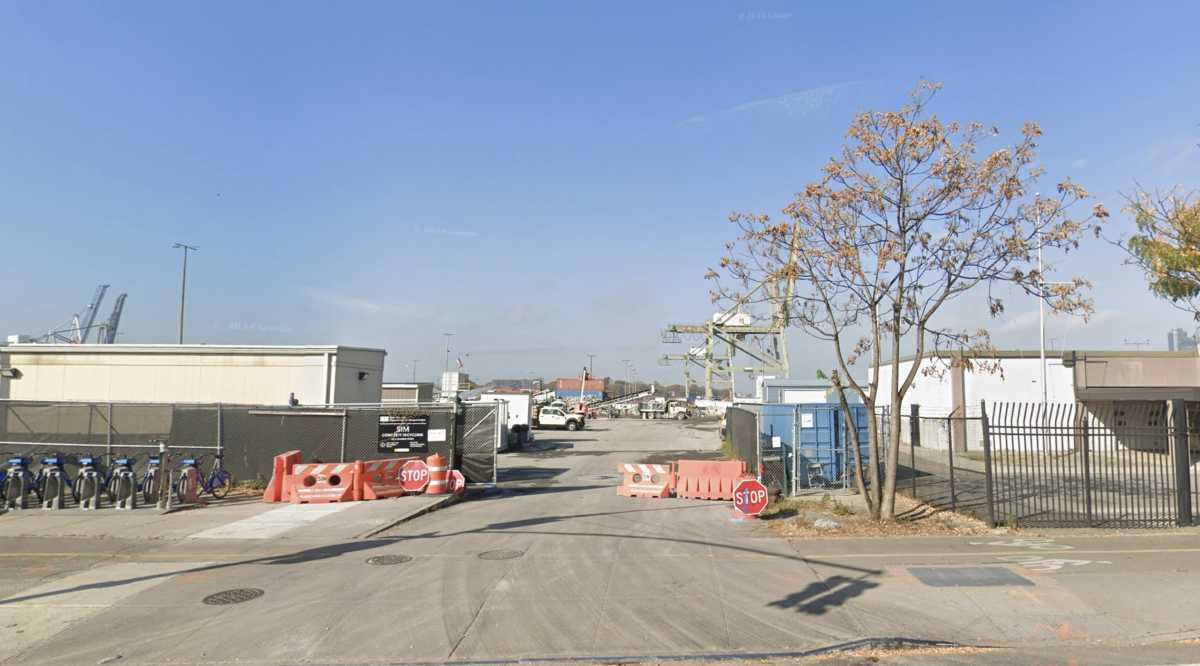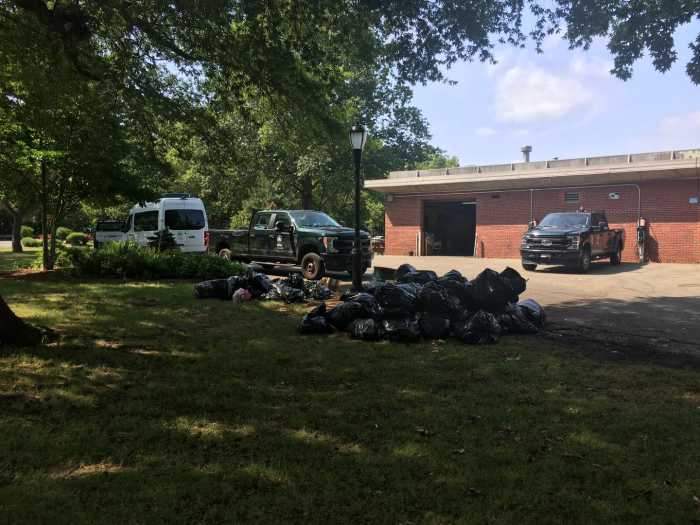By Lesley Sussman
A Chinese civic association investigating a link between poor air quality in Chinatown and what it says is an increase in asthma cases has begun an area-wide survey to substantiate its claim.
The Chinese Progressive Association, a nonprofit grassroots community organization that works for the full equality and empowerment of the Chinese community, launched its China-town Environmental Health Project survey in March, and will continue the survey through August.
The project is focusing on Chinatown and parts of the Lower East Side, including part of Madison St. adjacent to Park Row. The effort hopes to reach 600 households using a 30-member team of volunteers, speaking Chinese, Spanish and English.
Mae Lee, C.P.A.’s executive director, said the survey’s goal is to determine what effect Canal St.’s heavy truck and bus traffic is having on community health, along with other sources of air pollution in the area, such as the Chinese interstate buses that idle their engines while waiting to load customers.
“These buses provide a useful service,” Lee said. “But every time a bus idles or circles the block it burns diesel fuel that releases dust, smoke and fine particles into the air.”
She added that the environmental health project will not only investigate the effects of poor air quality on community health, but that they also hope to collect community input on solving the problem.
Lee said once the survey is done, the findings will be presented to various community organizations, government agencies, community boards, the City Council and local politicians to see what can be done to help clean the air. C.P.A. will also sponsor a public hearing and conduct other education and outreach programs.
This isn’t the first time C.P.A. has conducted such a survey, Lee said. She noted that a similar study was undertaken in 2002 in which 580 Chinatown and Lower East Side households were contacted.
“We found that one in five households had someone with asthma living there,” Lee said. “Most of them said they had been diagnosed by a doctor after they moved into the neighborhood.”
The C.P.A. director emphasized that many of those residents never sought treatment at hospitals, so Health Department statistics on the disease’s scope don’t accurately reflect what the organization believes is a growing problem.
In the 2002 survey, more than half the asthmatics were children, Lee said, adding that 63 percent of them were diagnosed with asthma after moving to their current apartments. The survey further determined that central Chinatown, with its higher concentrations of traffic and commercial activity, had a higher concentration of residents with asthma than other parts of the neighborhood.
Lee said the problem of poor air quality in Chinatown was first brought to her agency’s attention in 1996. She added that the World Trade Center collapse in 2001 has further contaminated the area’s air.
“We not only want to raise awareness about environmental issues in Chinatown and the Lower East Side, but we also want to find out what the residents think the sources of this pollution are and what should be done to improve the environment,” Lee said. “Then we want to make recommendations for changes toward a cleaner and healthier environment.”
Lee said volunteers have been fanning out through the area and are “mainly going to different community centers on the weekends, walking around and going to the parks or talking to people on the streets about the problem and the solutions.
“We ask them where they live, to make sure they’re in our area, and then ask them about their household — whether they have people living with asthma there and when they got it,” Lee said.
Lee said that in recent years other studies have substantiated C.P.A.’s claim that the area’s poor air quality is having a negative impact on community health — particularly around Canal St.
A 2008 Environmental Protection Agency study determined the area had one of the city’s highest diesel-pollutant levels. The E.P.A. study further reported that these harmful pollutants — known as PM2.5 — were small enough to be inhaled directly into humans’ lungs, causing respiratory problems and long-term side effects.
An earlier 2007 study by the city’s Department of Health and Mental Hygiene, also found that Chinatown had one of the highest concentrations of fine particulate matter in the five boroughs — mainly because of the heavy truck and bus traffic moving over three bridges.
The city study found that 6.4 percent of Lower Manhattan respondents reported having an asthma attack or episode during the year, the second highest rate in Manhattan, after Central Harlem.
Jennifer Long, a C.P.A. volunteer, said that residents she interviewed, so far, have complained about more than just outdoor pollution.
“I get a lot of tenants also talking about indoor air pollution, how their buildings aren’t clean and are infested with cockroaches, and about rat droppings,” Long said. “A lot of people I’ve spoken to want more parks. And we get a lot of complaints about bad smells coming from somewhere.”
Lee also noted that one reason for the high traffic volume along Canal St. was the expensive tolls on the Verrazano Bridge. She said this was causing trucks and other vehicles to seek alternative routes, such as Canal St., to cross more cheaply from Brooklyn to New Jersey.
Lee said that most of the funding for the Chinatown Environmental Health Project is from the state Department of Environmental Conservation, but that it’s mainly a volunteer effort. She added that more volunteers are needed.





































